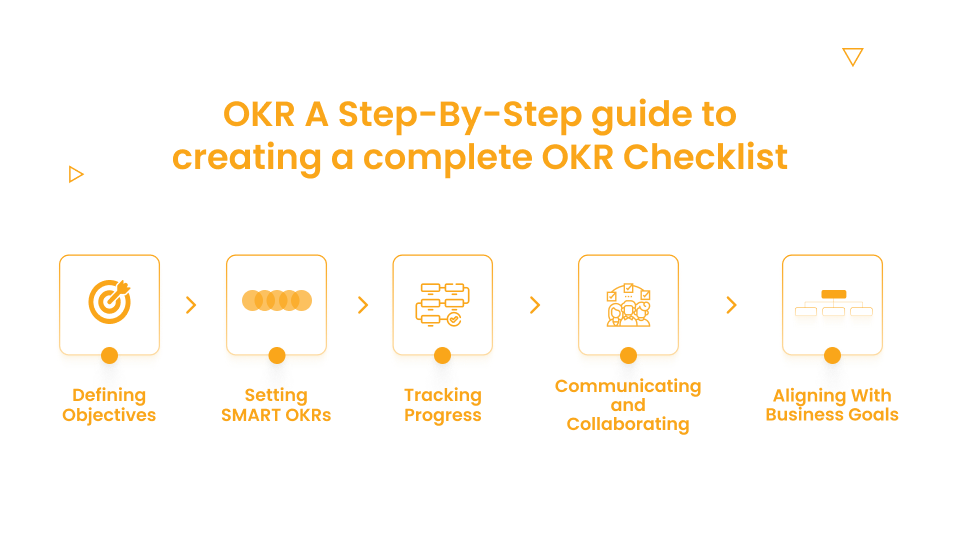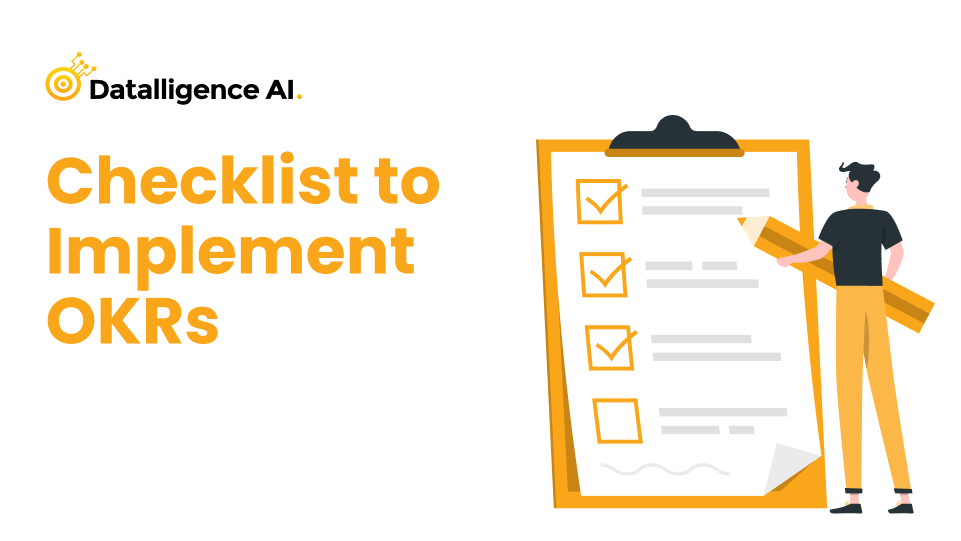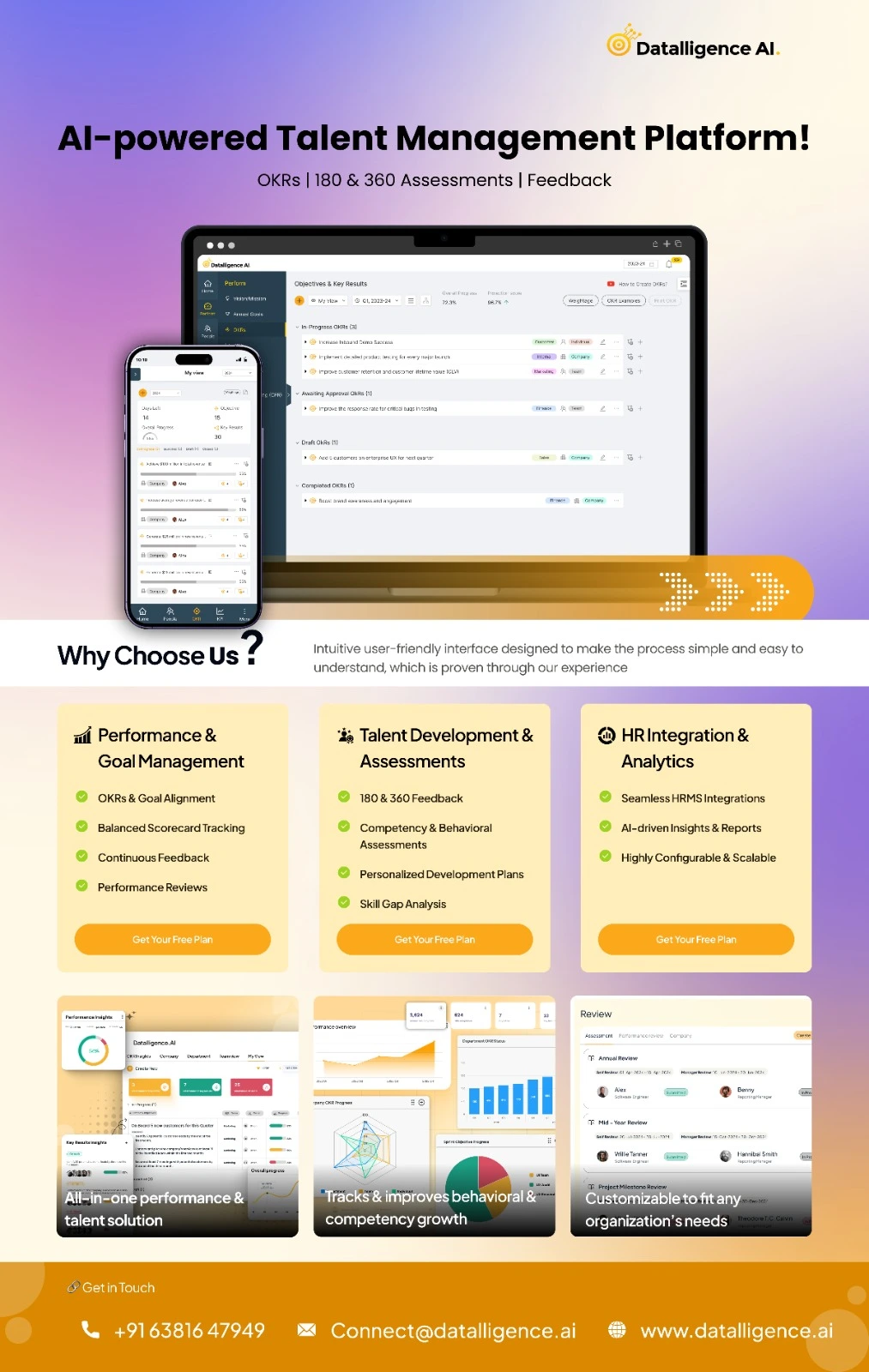An OKR checklist strengthens the goal-setting framework by providing a structured approach to defining, tracking, and achieving objectives. It ensures that all key elements such as alignment with company vision, measurable key results, ownership, and regular progress tracking are systematically addressed. Without a checklist, teams may set vague or unrealistic goals, leading to misalignment and ineffective execution. By following a well-defined checklist, organizations can maintain focus, set clear priorities, and create a culture of accountability, ensuring that every team member understands their role in driving business success.
Additionally, an OKR checklist enhances adaptability and continuous improvement within the goal-setting process. By incorporating regular reviews and evaluations, it allows teams to identify challenges early, make necessary adjustments, and refine their strategies based on real-time insights. This iterative approach helps organizations stay agile and responsive to changing business conditions while maintaining a strong focus on long-term objectives. With a robust checklist in place, companies can avoid common pitfalls in goal setting, drive sustained progress, and ensure that OKRs remain an effective tool for business growth and performance optimization.
Understanding the OKR Checklist
An OKR (Objectives and Key Results) checklist serves as a comprehensive guide for organizations aiming to implement the OKR framework effectively. It ensures that all necessary steps are taken to align team efforts with company goals while also facilitating accountability and tracking progress. The checklist typically involves defining the company’s vision, mission, and values, establishing overall objectives, and breaking down objectives into SMART goals. Identifying key results that indicate success, assigning ownership for each goal and key result, and setting timelines for completion are essential components. Tracking progress and measuring success, regularly reviewing and evaluating progress, celebrating successes, and adjusting goals as necessary complete the structured approach. This process helps organizations navigate the complexities of OKR implementation, ensuring clarity and alignment throughout.
Step-by-Step Guide to Creating an OKR Checklist

Define Objectives
Identify desired outcomes, ensure alignment with the company’s broader goals and vision, and make objectives specific, measurable, and attainable.
Set SMART OKRs
Ensure objectives are Specific, Measurable, Achievable, Relevant, and Time-bound. Setting clear and realistic goals helps teams remain focused and measure progress effectively.
Track Progress
Regular monitoring is crucial. Utilize clear metrics for tracking, evaluate progress periodically, and adjust strategies as needed to stay on course.
Communicate and Collaborate
Effective communication enhances OKR implementation. Provide updates on OKR status, share best practices, and foster a collaborative environment to align team efforts toward common goals.
Align with Business Goals: Ensure that OKRs contribute to the company’s vision and mission. Engage all team members in understanding their roles in achieving these goals to strengthen commitment and increase productivity.
Regularly reviewing and refining the OKR checklist ensures that organizations continuously improve their goal-setting strategies. By fostering collaboration and maintaining alignment with business priorities, companies can drive long-term success through a structured OKR approach.
Detailed Checklist for Implementing OKRs
Implementing OKRs effectively requires a step-by-step approach to ensure clarity, alignment, and success. Below is a more detailed checklist to help organizations smoothly integrate OKR tracking tool into their operations:
Define Clear Objectives:
Identify the core goals that drive the company’s vision and mission.
Ensure objectives are ambitious yet realistic to motivate teams.
Clearly communicate the purpose and expected outcomes of each objective.
Establish Key Results:
Determine how success will be measured for each objective.
Use quantifiable metrics to track progress effectively.
Ensure key results are outcome-driven, not just activity-based.
Assign Ownership and Responsibilities:
Designate individuals or teams responsible for each objective and key result.
Clarify roles to ensure accountability and commitment.
Provide the necessary resources and support for successful execution.
Set Timelines and Milestones:
Define a clear time frame for achieving each objective.
Break down goals into smaller milestones for easier tracking.
Regularly assess progress and make adjustments as needed.
Monitor Progress and Adapt Strategies:
- Use dashboards or OKR software to track key results.
- Schedule regular check-ins to review progress and challenges.
- Adjust strategies if objectives are not on track, ensuring flexibility.
Encourage Collaboration and Transparency:
Foster open communication among teams about their OKRs.
Share updates on progress, challenges, and best practices.
Encourage cross-functional teamwork to drive better outcomes.
Review, Reflect, and Improve:
Conduct periodic OKR reviews to analyze performance and impact.
Identify lessons learned and apply them to future goal setting.
Celebrate achievements and recognize team contributions.
Tracking Progress
Tracking progress is crucial to the success of your OKRs. This involves regular monitoring and measuring the progress of your objectives and key results. It is essential to track progress regularly to ensure that you are on track to achieve your desired outcomes. Tracking progress also enables you to adjust if necessary, ensuring that you are always aligned with your objectives and OKRs. When tracking progress, make sure that you use clear and simple metrics that enable you to easily measure your progress and identify any areas for improvement.
Communicating and Collaborating
Communicating and collaborating are essential components of implementing OKRs. This involves regularly updating your team on the progress of your OKRs, sharing best practices, and seeking feedback. Collaborating with your team helps to ensure that everyone is aligned and working towards a common goal. When communicating and collaborating, make sure that you involve everyone in the process, keeping everyone informed and engaged, and fostering a sense of teamwork and collaboration.
Aligning with Business Goals
Aligning your OKRs with your business goals is critical to the success of your implementation. This involves ensuring that your OKRs align with your company’s vision, mission, and values, as well as ensuring that they are aligned with your department’s goals and objectives. When aligning your OKRs with your business goals, make sure that you communicate your goals and objectives, keep everyone informed and engaged, and ensure that everyone is working together to achieve a common goal.
Simple Checklist to Start
Starting your OKR implementation can seem daunting, but by following a simple checklist, you can ensure that you get off to a great start. The checklist should include defining your objectives, setting SMART OKRs, tracking progress, communicating, and collaborating, and aligning with business goals. Remember to keep things simple, focused, and actionable, and to keep everyone informed and engaged throughout the process. With the right approach and a commitment to continuous improvement, you can ensure that your OKR implementation is a success.
Why having an OKR checklist is important
Having an OKR (Objectives and Key Results) checklist is important for several reasons:
- Provides clarity on goals and objectives.
- Ensures accountability and focus.
- Aligns team efforts towards a common goal.
- Facilitates progress tracking and evaluation.
- Promotes continuous improvement and growth.
- Increases motivation and engagement.
- Enhances communication and collaboration decision-making and resource allocation.
- Supports effective goal-setting and prioritization.
- Supports long-term strategic planning and execution.
Conclusion
In conclusion, implementing OKRs can help your organization achieve its goals, align your team, and track progress along the way. By following these steps, you can ensure that your OKRs are SMART, aligned with your business goals and that everyone is working together towards the same objectives. Talk to our experts and coaches and gain more insights or try Datalligence











